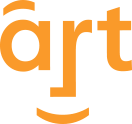1. Gap
The Campaign: Gap teamed up with popular group-buying site, Groupon, to offer a nation-wide deal: $50 worth of apparel for just $25. By the end of the day, 441,000 groupons were sold bringing in a little more than $11 million.
What Worked: This was Groupon’s first nation-wide deal with a major brand. For Gap, the deal brought in a ton of cash and, hopefully, new customers.
What Flopped: Some people commented that the Groupon deal was a bust because Gap doesn’t “need” more word of mouth. He saw it in terms of revenue loss rather than customer gain.
2. Toy Story 3
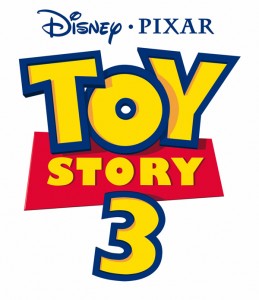 The Campaign: Pixar and Disney let out a barrage of videos, tie-ins, and ads to promote Toy Story 3. Aside from traditional banner ads and billboards, Disney created viral videos including fake, vintage-style ads featuring the new characters, an iAd featured on the IPhone 4, and a Facebook page complete with a built-in ticket-buying app.
The Campaign: Pixar and Disney let out a barrage of videos, tie-ins, and ads to promote Toy Story 3. Aside from traditional banner ads and billboards, Disney created viral videos including fake, vintage-style ads featuring the new characters, an iAd featured on the IPhone 4, and a Facebook page complete with a built-in ticket-buying app.
What Worked: The video successfully played on the nostalgia of their entire demographic. Kids could appreciate the fake toy commercials while their parents could reminisce about their own childhood toys; a sentiment entirely in line with the Toy Story brand. The Facebook app was connected to news streams such that you could share when you bought tickets to the movie.
What Flopped: The social media campaign was pretty solid on most counts. The danger of associating with major brands (like the iAd) is that your product can appear too polished or too corporate. It all comes down to knowing your product and knowing your brand. In this case, Disney-Pixar hit a home run.
3. AOL
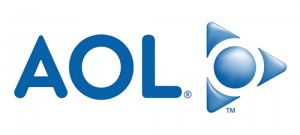 The Campaign: AOL set out to hire an ambassador for its social aggregation site Lifestream. More than just a mascot, the ambassador position was known as “the best job ever” with bonuses like a cushy apartment and VIP access to concerts and events across the country. The hiring process was a mix of traditional “resume and interview” applications and an extensive social media voting process headed up by the hopeful employees. The eventual ambassador was asked to reach out to their fans with regular updates.
The Campaign: AOL set out to hire an ambassador for its social aggregation site Lifestream. More than just a mascot, the ambassador position was known as “the best job ever” with bonuses like a cushy apartment and VIP access to concerts and events across the country. The hiring process was a mix of traditional “resume and interview” applications and an extensive social media voting process headed up by the hopeful employees. The eventual ambassador was asked to reach out to their fans with regular updates.
What Worked: AOL is trying to reboot as a “cool” brand. Rather than spend a fortune on commercials with hip people using the product, AOL offered a service that its desired demographic would actually want; namely, a sweet job. Having the position decided by fan vote helped organically spread the word and create a supportive community that was invested in their product.
What Flopped: One let down was the inevitable decrease in hype. The buzz around AOL’s new dream job died down once the spot was filled. No amount of celebrity spottings or updates from the winning ambassador could compete with the initial creativity of the campaign. Planned follow-up campaigns are also suffering from this.
4. Starbucks
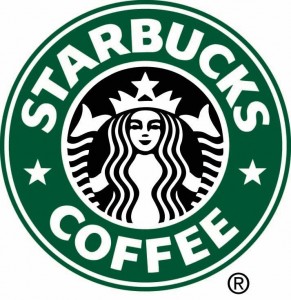 The Campaign: Starbucks has been busy with a bunch of successful social media campaigns across a range of networks. The coffee giant offered mayorship deals on foursquare, free goodies for Tax Day via Twitter’s then-new promoted Tweets, and a free pastry day promoted through Twitter and Facebook.
The Campaign: Starbucks has been busy with a bunch of successful social media campaigns across a range of networks. The coffee giant offered mayorship deals on foursquare, free goodies for Tax Day via Twitter’s then-new promoted Tweets, and a free pastry day promoted through Twitter and Facebook.
What Worked: If you’re going to offer discounts, make sure they’re on products you want to feature. Rather than setting up blanket deals, Starbucks focused on areas where they wanted to improve sales. Free pastry day got publicity for their non-coffee offerings, the mayor deals often provide discounts on new products, tax day’s free coffee promoted recycling — part of the brand’s greener image. Jumping on Twitter’s promoted tweets early also garnered Starbucks a lot of publicity in the tech and social media worlds — a demographic that generally has money to spend on premium coffee. Essentially, if a news organization wanted to cover promoted tweets as they launched, Starbucks was a major go-to example.
What Flopped: Starbucks is good at promoting things — its social media campaigns seem less concerned, however, with building a vibrant community. Starbucks already has near-religious levels of customer loyalty, so this may be a smart resource allocation rather than oversight.
5. Mountain Dew
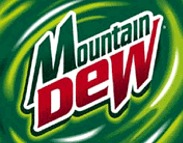 The Campaign: When Mountain Dew wanted to create a new flavor, they did it the social media way. DEWmocracy was a multi-part, long-term project aimed at creating a new soda flavor through fan voting. The campaign started by narrowing down a series of fan-made flavors with home-tasting packs. The three were chosen through a country-wide tour complete with voting and video booths. Mountain Dew then created “Flavor Nations” composed of fans, experts, and professional ad agencies. Each flavor nation was responsible for the packaging, graphics, and social marketing of their flavor including viral videos, promotion on Twitter, and professional commercials. The winner was chosen by mass vote.
The Campaign: When Mountain Dew wanted to create a new flavor, they did it the social media way. DEWmocracy was a multi-part, long-term project aimed at creating a new soda flavor through fan voting. The campaign started by narrowing down a series of fan-made flavors with home-tasting packs. The three were chosen through a country-wide tour complete with voting and video booths. Mountain Dew then created “Flavor Nations” composed of fans, experts, and professional ad agencies. Each flavor nation was responsible for the packaging, graphics, and social marketing of their flavor including viral videos, promotion on Twitter, and professional commercials. The winner was chosen by mass vote.
What Worked: Like AOL, Mountain Dew gained a ton of exposure and loyalty by mobilizing its customers to help grow the brand. The largely grassroots movement built natural buzz around the new flavors with a huge net of social media exposure. Mountain Dew was also able to keep the projects on-brand. Despite having disparate communities working on the flavor nations, the ad agencies and experts helped guide the discussion and create a polished finished product while allowing fans to have a real say on the company’s marketing direction.
What Flopped: The nature of the campaign means that two of the flavors won’t get made. Assuming the voting was close; this means Mountain Dew could alienate a relatively large portion of its fans who worked on the losing, discontinued flavors. This also assumes that Mountain Dew’s fans took the campaign to heart and would be more frustrated at losing the competition rather than excited to be shaping their brand’s future.



